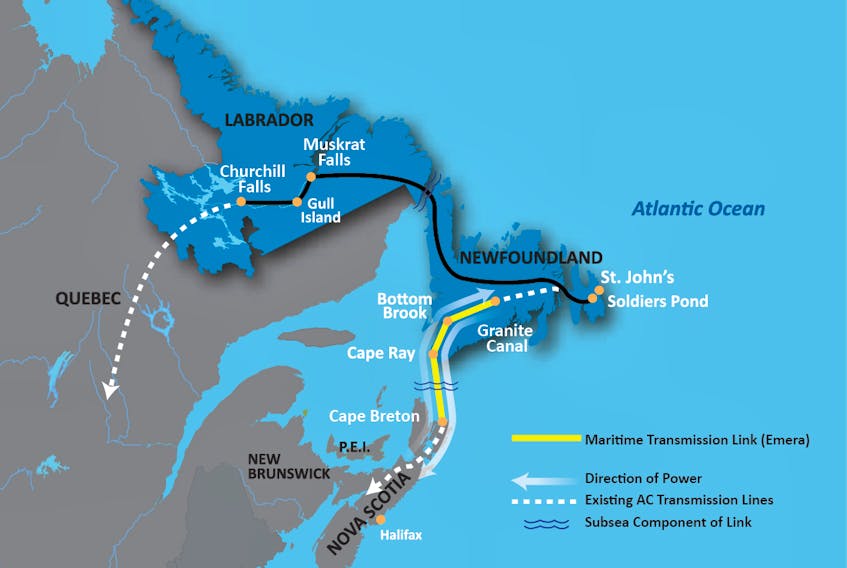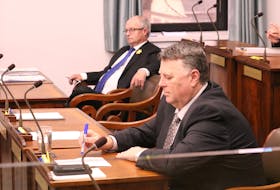The Muskrat Falls project must have more feet than a millipede, because every time you look, there’s another shoe dropping.

Last week in this space, (“Setting the stage for #DarkNL 2,” Oct. 6), I wrote about how Newfoundland and Labrador Hydro was putting in place a contingency plan to guarantee power for this winter. The plan was needed as a result of lingering software problems with the new Labrador-Island Link (LIL) that may mean that line can’t supply the consistent winter power to the Northeast Avalon that it was expected to.
The contingency plan came after the province’s Public Utilities Board told Hydro to start reporting on its winter readiness every two weeks.
Those plans include everything from expecting full supply from the aging Holyrood plant to, if necessary, cutting voltage during peak periods and causing brownouts to conserve power.
That plan has also led to an interesting question from the Public Utilities Board, which asked why the power company hadn’t included power purchases over the Maritime Link to bolster the island’s winter supply.
Remember, among all the other verbiage tossed out about the legion of wonders of the Muskrat Falls project, one piece of information was that being connected to the North American grid would mean we’d have a much more consistent supply of power than we do with an isolated power system.
Talking to The Telegram after a 2013 power failure involving the shutdown of Hydro generation, Hydro vice-president Rob Henderson said, “Once we become interconnected with the rest of the North American grid, these types of incidents may still occur in terms of the generators may come off, but the customers will not be aware that it happened. … The system will respond and take power from the rest of the North American grid, which has a lot of generating capacity to bring things into balance. So we don’t need to interrupt customers to do it. … The system will do it.”
Think carefully about what that means: essentially, Hydro is saying that it has more confidence in the ability of its three aging turbines at Holyrood to operate at full capacity throughout the winter than it does in obtaining consistent power over the brand-new Maritime Link.
That may still be the case for short-term outages.
But what about more consistent supply?
After all, in February of this year, Nalcor pointed out in a news release that power had flowed both ways across the Maritime Link and that “brings opportunities to enhance system reliability and realize cost savings for electricity customers.”
So why didn’t Hydro include the Maritime Link in its power supply calculations for this winter?
Well, ouch. The answer actually stings.
Because Hydro doesn’t consider the Maritime Link to be a reliable supply of power after all — at least, not for the upcoming winter.
Here’s Hydro’s explanation in full: “As part of its winter readiness planning, Hydro only includes firm capacity in its adequacy analysis (i.e., capacity that is confirmed to be available to Hydro for the whole winter season). Hydro has confirmed, through Nalcor Energy Marketing, that supply is not available over the Maritime Link on a firm basis for the 2018-2019 winter season,” Hydro said in a letter to the PUB dated Oct. 10.
There may be some power; there may be power for a period of time. But, “While quantities of energy and capacity are expected to be available over the Maritime Link and, depending on the circumstances, may be available for extended periods of time, the availability of this capacity is not certain. Therefore, Hydro is not including capacity over the Maritime Link in its contingency planning.”
Think carefully about what that means: essentially, Hydro is saying that it has more confidence in the ability of its three aging turbines at Holyrood to operate at full capacity throughout the winter than it does in obtaining consistent power over the brand-new Maritime Link.
These are the same three turbines that have had persistent problems through the last few winters. Their replacement is also one of the main reasons why the Muskrat Falls project was required in the first place.
But they are included — at their full power rating — in Hydro’s winter contingency plan.
The Maritime Link is not.
The bottom line?
The Maritime Link was supposed to be something of a saviour, delivering power when we needed it.
But when we do need it, its power simply may not be available.
How many more shoes are left to fall?
Russell Wangersky’s column appears in 36 SaltWire newspapers and websites in Atlantic Canada. He can be reached at [email protected] — Twitter: @wangersky.









